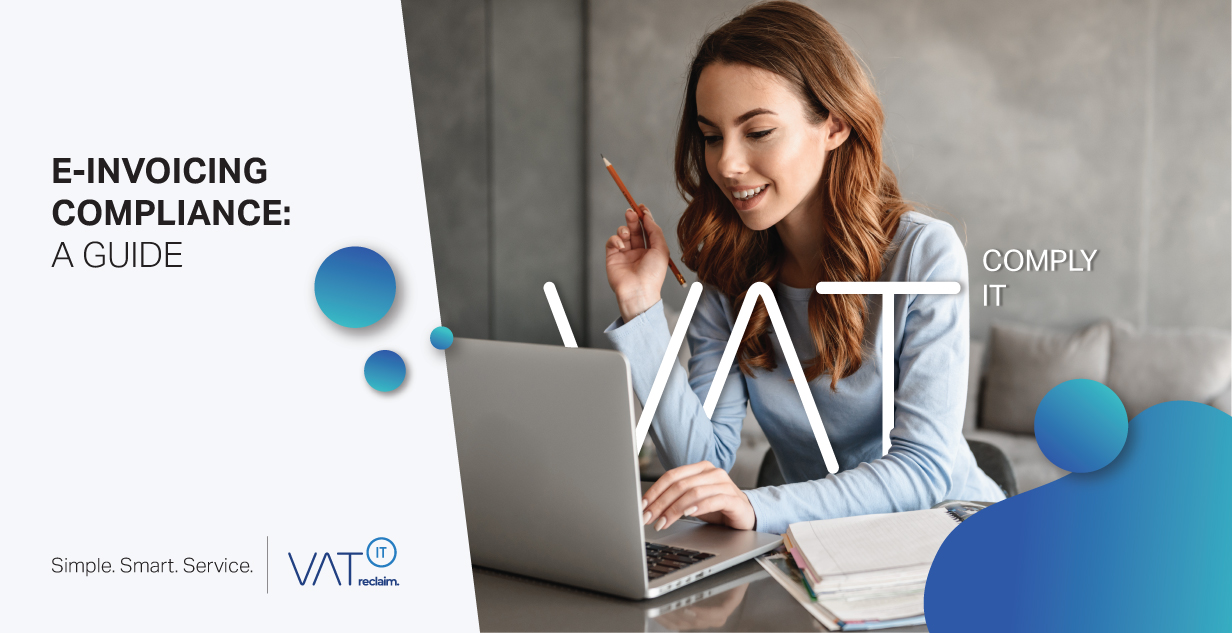E-invoicing Compliance: A Guide
Does your business have the technology and processes in place to comply with e-invoicing requirements? This is not an abstract question, but an urgent compliance issue. If your business does not currently have e-invoicing compliance obligations,...

Does your business have the technology and processes in place to comply with e-invoicing requirements? This is not an abstract question, but an urgent compliance issue. If your business does not currently have e-invoicing compliance obligations, chances are you will in the near future. As more countries implement electronic requirements for invoicing and filing VAT submissions, businesses need to ensure they can meet their obligations, or risk fines and penalties.
What is e-invoicing compliance?
An increasing number of countries now have e-invoicing regulations. Complying with e-invoicing rules generally means producing, issuing and transmitting electronic invoices in the correct format, using appropriate technology.
It’s important, therefore to understand what e-invoices are in the first place. E-invoices are not simply paper invoices that have been digitised (e.g. a scanned PDF).So, how does an e invoice work? E-invoices are machine-readable electronic documents, produced in the prescribed format. Often they follow a widely-recognised standard, such as PEPPOL.
Under e-invoicing rules, it’s not sufficient simply to generate e-invoices. You also need to electronically deliver the e-invoice to the relevant business. The process should be fully automated, and integrated into the company’s ERP.
Is e-invoicing mandatory?
In line with a broader trend towards digital compliance, e-invoicing is now mandatory in several countries. For example, some form of e-invoicing is in effect from Austria to India to Singapore. Many additional jurisdictions are planning to implement e-invoicing.
However, e-invoicing does not apply to all businesses, or in the case of all transactions.
Who is liable for e-invoicing?
Generally, e-invoicing applies to business-to-business (B2B) transactions. It may also apply to transactions between businesses and government entities (B2G). E-invoices do not have to be issued to customers.
In addition, many countries have chosen a phased approach to mandatory e-invoicing. In many cases, in the initial phase, e-invoicing is only obligatory for larger firms, with a high turnover.
As the regulations are different in every country, businesses should consult local authorities, or a VAT specialist, to get up-to-date advice in each country in which they might have obligations. Regulatory compliance in the European Union may not be the same as in the United States. So, whether it's a B2B e-invoice or B2C, each business must be adhering to legal compliance set by their government.
What are the different e-invoicing models?
Globally, there are two principal models for e-invoicing: the clearance model and the post-audit model.
The clearance model
Under the clearance model, e-invoices are validated by the tax authority before they are distributed to the corresponding business.
The clearance model provides tax authorities with detailed realtime information about business transactions. It is also an effective way to monitor VAT evasion. The model has been adopted in Italy and several South American countries, among other jurisdictions.
The post-audit model
Under the post-audit model, businesses transmit e-invoices directly to each other. They only account to tax authorities after the fact, through regular submissions. The post-audit model is fairly common among European Union states.
Note, however, that countries may choose to change their model for managing e-invoice reporting.
Can e-invoicing affect VAT compliance?
As should be clear from the description of the two e-invoicing models, electronic invoices play an important role in monitoring VAT compliance. Failure to comply with e-invoicing requirements thus puts you at direct risk of VAT noncompliance.
The local tax authority either assesses a company’s invoices by inspecting periodic submissions (on the post-audit model) or there is some form of mandatory real-time reporting in place.
In either case, it is essential to understand the local invoicing requirements in order to avoid breaching VAT regulations.
Tax regulators will assess whether invoices are authentic, and have not been tampered with. A company may need to prove that it has stored electronic invoices in their original form, without amendments, and that no invoices are missing.
Specialised technology that issues e-invoices with an electronic signature is often a critical part of complying with the requirement to prove e-invoices are authentic, complete and unaltered.
Electronic tax compliance beyond invoices
As discussed above, electronic invoicing is one component of a broader trend towards digital VAT compliance and monitoring.
Many tax offices are also moving to replace conventional audits and inspections with electronic audits, using the specialised electronic submissions. In some countries, taxpayers must submit SAF-T files as part of their tax submissions (including VAT submissions).
In order to stay ahead of changing tax compliance rules, businesses need to ensure their ERP systems are up to the job of creating and transmitting all required data, in the correct format.
Data integrity is now a priority
Now that government authorities are moving to precise, automated assessments of company records, accuracy is paramount. Tax offices are more capable of identifying irregularities, at a much more detailed level.
There is, therefore, much less room for error. Businesses need to ensure all invoices are reliable and complete. Automation with built-in error-correction is thus now critical if you want to remain fully compliant.
Do you have to store e-invoices?
Companies must store invoices for a specified amount of time, under most counties’ tax laws. E-invoices are no different. Businesses may not delete e-invoices after issuing them and must securely store them, in an accessible format, for a prescribed time period. Businesses may need to invest in an effective digital storage solution in order to meet e-invoicing compliance rules.
Just as important as legal compliance is, tax compliance requires businesses to uphold regulations set by the tax administration. So, it’s essential that each business store all e-invoices.
Is full e-invoicing compliance difficult to achieve?
Research indicates that electronic VAT compliance and electronic invoicing is simpler and more efficient - if businesses have the appropriate technology and systems. By contrast, companies that don’t use fully compatible software often find e-invoicing and digital VAT compliance time-consuming, expensive and prone to error.
And because e-invoicing compliance is central to VAT compliance, you need an effective, integrated system that ensures you are always fully compliant.
Ideally, your business needs flexible technology that lets you adapt to changing regulations and ensures you can quickly meet filing obligations in new markets.
Our VAT software was designed to seamlessly integrate with all leading ERPs, expense management systems, travel management platforms, and financial institutions via live pull APIs.
We provide the technology, insight and assistance you need to manage all electronic compliance, seamlessly, efficiently and more cost-effectively.
As the world’s VAT compliance and recovery specialist, VAT IT will ensure your business is always fully VAT compliant, while maximising VAT reclaim opportunities.
Related blogs
VAT refund Tool kit
Contact Us
Come explore your refund possibilities.
Chat with us today.
Find out how you could turn company spend into income




